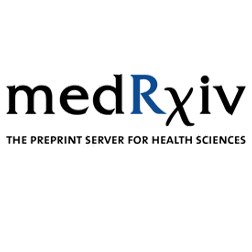- Joined
- Dec 21, 2018
- Messages
- 236
- Reaction score
- 920
Interesting rationale for posting the pre-print on medrxiv:
Overall good news.I’ll revive this to post the COMET-SABR long term followup preprint
Overall good news

Stereotactic Ablative Radiotherapy for the Comprehensive Treatment of Oligometastatic Cancers: Long-Term Results of the SABR-COMET Phase II Randomized Trial
Purpose The oligometastatic paradigm hypothesizes that patients with a limited number of metastases may achieve long-term disease control, or even cure, if all sites of disease can be ablated. However, long-term randomized data testing this paradigm are lacking. Methods We enrolled patients...www.medrxiv.org

"What we have for now." Givers to the havers should be more thoughtful with the giving, and the havers should be more skeptical in the receiving 😉I think you make a very good point, and it is part of the rationale for the confirmatory phase III. Certainly there is some trepidation with this data for sure, with some questions about its robustness. But it is what we have for now, and will have to await the larger studies.
Initial SABR COMET
Control vs SABR Median OS: 28 mos (95% CI 18-33 mos) vs 41 mos (95% CI 26-∞ months), p=0.09, n=99
Followup SABR COMET
Control vs SABR 5y OS: 18% (95% CI 6-34%) vs 42% (95% CI 28-56%), p=0.006, n=99
You don't have to be a statistician to know the followup analysis is committing a slight mathematical fallacy/being misleading.
They already said it was a significant result in the beginning (they prespecified any p value less than 0.2 as significant).
Don't get mislead to think a few events one way or another in a very small study makes additional time followup reporting of the study "more significant."
Could be semantics but doing focal RT for mets to improve survival is a pretty BFD. To me it's not the equivalent of using a pre-existing drug in a novel fashion on the basis of a small trial. SABR COMET is a whole new drug. Takes more than 50 patient single arm trials to approve new drugs in oncology 99.99% of the time. Now granted if SABR COMET were a drug, pharma would be all over this new "SABR drug" given its "good" (but fragile) result and gearing up big multimillion dollar ph III studies. But it wouldn't be a standard of care yet, and the med oncs would not yet have the "SABR drug" available to use. As Dr. Hahn would not have approved it yet based on this data!Yes, there is fragility to the study, and that doesn't really change with length of follow-up in this scenario, but this discussion of 'what ifs' is only something that radiation oncologists do to themselves. Medical oncologists don't do this. Med oncs make treatment decisions based on 50 patient single arm trials all the time.
SABR-COMET's cut-off for being low enough to be 'truly significant' is p < 0.005, which this does not meet.
We'll see with the phase 3 trial. In the interim, as I don't have that trial open, I will be offering this to patients off trial. Feel free to not do the same in your practice.


Could be semantics but doing focal RT for mets to improve survival is a pretty BFD. To me it's not the equivalent of using a pre-existing drug in a novel fashion on the basis of a small trial. SABR COMET is a whole new drug. Takes more than 50 patient single arm trials to approve new drugs in oncology 99.99% of the time. Now granted if SABR COMET were a drug, pharma would be all over this new "SABR drug" given its "good" (but fragile) result and gearing up big multimillion dollar ph III studies. But it wouldn't be a standard of care yet, and the med oncs would not yet have the "SABR drug" available to use. As Dr. Hahn would not have approved it yet based on this data!
I recall the ol' Upfront-Outback trial. Its initial DM curve looked like this in '96:

And then 10 years later looked like this:

(We will not get f/u this lengthy in SABR COMET.) Still to this day chemo is given before RT in brCA. It's standard of care but based on "wrong" data or at least p=NS data. And there was a "signal" from the study that RT before chemo is helpful in high LR risk patients. Good luck getting a med onc to try that though.
Right now, good luck getting med oncs not sending these oligomet patients. I do believe the data is a little hyped. But I do the SABR because the med oncs request it... and I don't do the RT before chemo in brCA because the med oncs also request that.
SABR for M+ disease would certainly buck the trend of radiotherapy advances which for the last ten years or so can be summarized with two words: treat less. Metastatic disease has been around for ~500 million years; the ability to effectuate a potentially good therapeutic focal RT ratio for it the last ~25 years. The boomer rad oncs could have been doing SABR all these millions of years in metastatic cases producing results that would make pharma nervous about immuno’s effectiveness? SABR COMET stakes an incredible claim. Despite the cold water throwing I hope it’s true. But I’ve seen some things.Rad onc: we eat our young! We make no advances!
Also rad onc: wow not all patients with metastatic disease survived until five years? Stupid academics!
